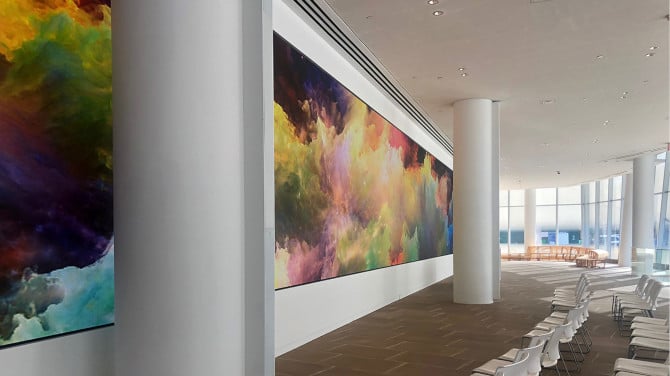Explaining Luminescent Panel Surface Brightness Metrics aiming at Ideal Screen Performance
Explaining Luminescent Panel Surface Brightness Metrics aiming at Ideal Screen Performance
Blog Article
Light Emitting Diode panel panels are increasingly popular in various settings, from homes to businesses and public spaces. These panels are known due to the vivid as well as dynamic visuals, that render these suitable to communicating data, ads, as well as entertainment. However, understanding the brightness levels for Light Emitting Diode panel screens remains crucial for ensuring optimal display performance. Brightness can be quantified using metrics known as nits, which indicate the amount of luminosity produced from a screen. A greater number of number of nits, the brighter a visual is. For instance, instance, a panel with 1,000 nits is considerably more vivid compared to a with 500 nits, making it more suitable in brightly lit settings.
When selecting a LED wall panel, one becomes crucial to consider the setting where that the screen will be used. For well-lit lit areas, such as retail environments and open-air locations, a increased brightness rate becomes essential for ensure visibility. Conversely, in dimmer settings, like theaters and conference rooms, a lower brightness rate might be adequate. This is because excessive bright excessive brightness in a dark environment can result in viewer discomfort among the audience, causing them harder for focus with a screen. Thus, comprehending specific particular requirements of the installation location can help in choosing the right illumination rate to ensure ideal visual experience.
A further important factor to consider Click This Link is the contrast ratio of the LED panel screen. The ratio measurement indicates how much disparity exists between the brightest most luminous white versus the darkest black shade which a panel is able to produce. A higher contrast ratio indicates that it can show more detail and depth, which improves overall visual clarity. For example, one screen boasting an contrast ratio of 10,000:1 will show images with more vivid colors and crisper features than a featuring a ratio Click This Link of one thousand to one. Such becomes especially important when displaying images and motion graphics that demand greater definition as well as detail, such as presentations or promotional material.
Additionally, the technology mechanism that drives Light Emitting Diode wall panels plays an essential part for their brightness and overall efficiency. Various kinds in Light Emitting Diode technologies, such as OLED and LCD, possess distinct traits that affect how luminosity is experienced. Organic Light Emitting Diode screens often offer better contrast as well as darker shades, which can improve a visual experience within dim environments. On the other hand, traditional LED screens might prove to be more suitable for bright spaces because of their ability to generate greater amounts of brightness. Comprehending such tech-related differences can guide consumers to making knowledgeable decisions according to their specific requirements.
In conclusion, consistent maintenance and adjustment for LED wall screens may help maintain optimal illumination and efficacy long-term. Dust and particles may accumulate on a screen, affecting its illumination and clarity of a visual. Periodic cleaning as well as professional calibration may guarantee that the screen operates in its optimal, providing uniform visual clarity. Additionally, some sophisticated Light Emitting Diode wall screens feature with integrated options that allow operators for adjust illumination settings and color adjustments according to their preferences. Through taking such measures, users can guarantee that their Light Emitting Diode panel panels provide the optimal display performance, regardless of where environment in that they are used.